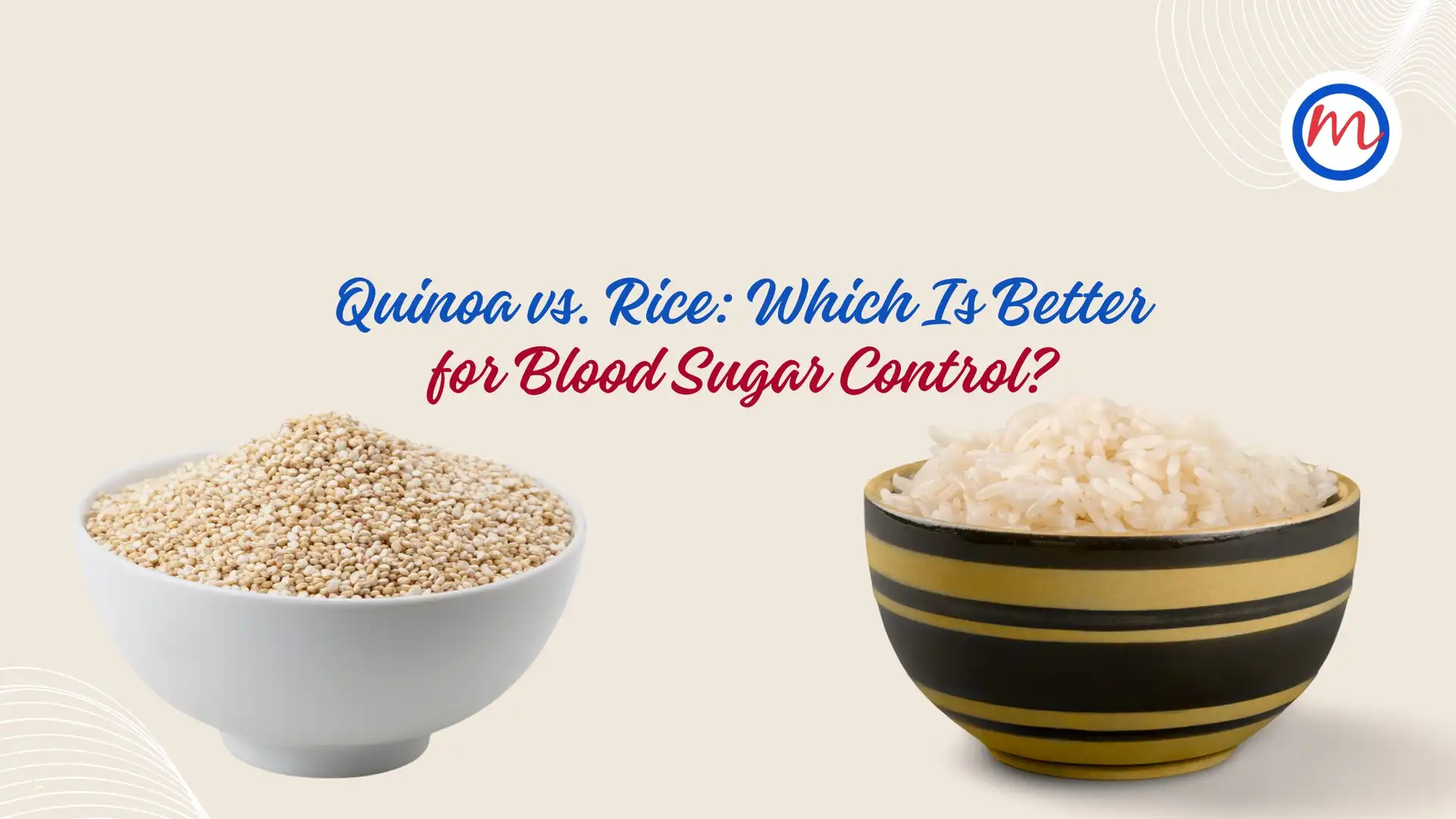Quinoa vs. Rice: Which Is Better for Blood Sugar Control?
Introduction to Quinoa and Rice
When it comes to selecting healthy grains, quinoa and rice are two of the most popular choices. Both are widely consumed across the globe, yet they differ in nutritional composition and impact on blood sugar levels. For individuals focusing on blood sugar control, understanding the differences between these grains is essential.
This article will explore the nutrient content of quinoa and rice and their effects on blood sugar levels. Whether you have diabetes or are simply looking for healthier carbohydrate alternatives, this comparison will help you make informed dietary decisions.
Differences in Nutrient Content
Quinoa and rice have distinct nutrient profiles. Quinoa is often considered a superfood due to its high protein and fibre content, making it a superior choice for individuals seeking balanced nutrition.
Quinoa vs. Rice – Nutritional Breakdown
- Protein Content: Quinoa contains all nine essential amino acids, making it a complete protein. Rice, especially white rice, lacks this benefit.
- Fibre: Quinoa provides about 5 grams of fibre per cup (cooked), whereas brown rice offers around 3.5 grams. White rice has negligible fibre content.
- Vitamins and Minerals: Quinoa is rich in magnesium, iron, and antioxidants like quercetin and kaempferol, whereas white rice is mainly a carbohydrate source with fewer nutrients.
- Carbohydrates: White rice consists mostly of simple carbohydrates, leading to faster glucose absorption, while quinoa’s complex carbohydrates ensure slower digestion and a steadier energy release.
Effects on Blood Sugar Levels
Quinoa and rice impact blood sugar levels differently due to their fibre, protein, and carbohydrate content.
- Quinoa: High fibre and protein content slow down digestion and glucose absorption, leading to steadier blood sugar levels.
- White Rice: Low in fibre, white rice is quickly digested and absorbed, causing rapid blood sugar spikes.
- Brown Rice: A better option than white rice due to its higher fibre content, but still less beneficial than quinoa in blood sugar regulation.
- Portion Control: Even healthy grains can raise blood sugar if consumed in excess, making portion size an important factor.
The Importance of Glycaemic Index and Glycaemic Load
The glycaemic index (GI) measures how quickly a food raises blood sugar levels, while the glycaemic load (GL) considers both the GI and portion size.
- Quinoa: Low-GI food, meaning it causes gradual blood sugar increases.
- White Rice: High-GI food, leading to quick spikes in blood sugar.
- Brown Rice: Moderate GI, offering a middle ground between white rice and quinoa.
Choosing low-GI foods like quinoa can help maintain stable glucose levels, benefiting those managing diabetes or looking for sustained energy throughout the day.
How Quinoa and Rice Impact Blood Sugar Control
- Quinoa’s Benefits: The high fibre and protein content contribute to slow digestion, preventing sudden glucose spikes.
- White Rice’s Drawbacks: Its refined nature and lack of fibre lead to rapid sugar absorption, increasing the risk of blood sugar fluctuations.
- Brown Rice’s Middle Ground: Retains more nutrients than white rice but does not provide the same level of blood sugar stability as quinoa.
By incorporating quinoa into meals, individuals can enjoy better blood sugar control and sustained energy levels.
Cooking and Serving Suggestions for Quinoa and Rice
Cooking Quinoa:
- Rinse quinoa under cold water to remove bitterness.
- Use a ratio of 1 cup quinoa to 2 cups water or broth.
- Bring to a boil, then simmer for 15 minutes until fluffy.
Cooking Rice:
- Rinse white or brown rice to remove excess starch.
- Use a 1:2 ratio of rice to water.
- Simmer white rice for 15 minutes and brown rice for 40 minutes.
Healthy Serving Ideas:
- Quinoa: Add fresh vegetables, herbs, and a squeeze of lemon for a nutrient boost.
- Rice: Pair with lean proteins and sautéed greens to maintain balanced nutrition.
Conclusion: Which One Is Better for Blood Sugar Control?
When comparing quinoa and rice for blood sugar management, quinoa emerges as the superior choice due to its high protein, fibre, and low glycaemic index.
- White Rice: High glycaemic index, causing rapid blood sugar spikes.
- Brown Rice: Better than white rice but still lacks quinoa’s overall benefits.
- Quinoa: Complete protein, high fibre, and slow glucose release make it the best option for stable blood sugar levels.
While quinoa is the better choice for blood sugar control, including moderate portions of brown rice in a balanced diet can still be a reasonable option. Making mindful dietary choices can help maintain steady energy levels and promote overall health.



